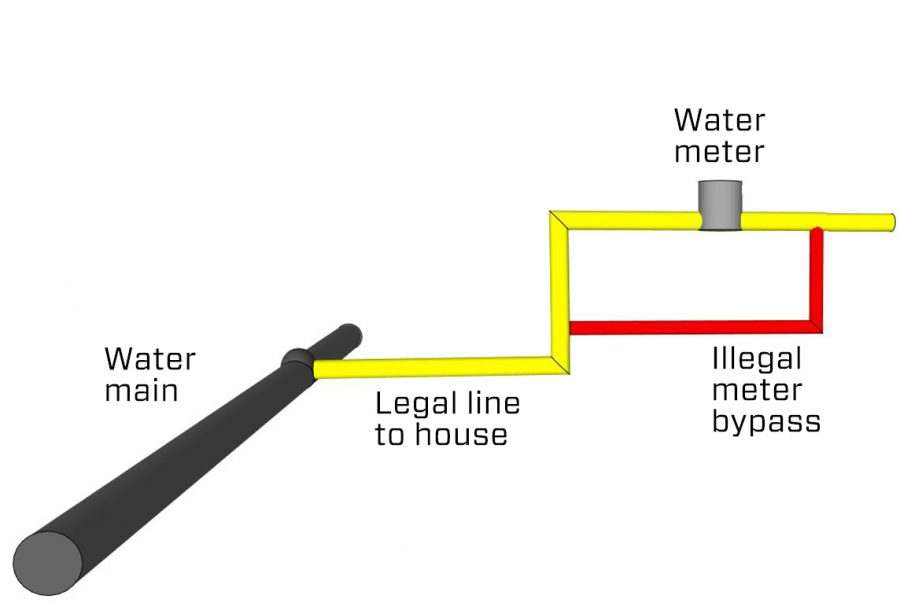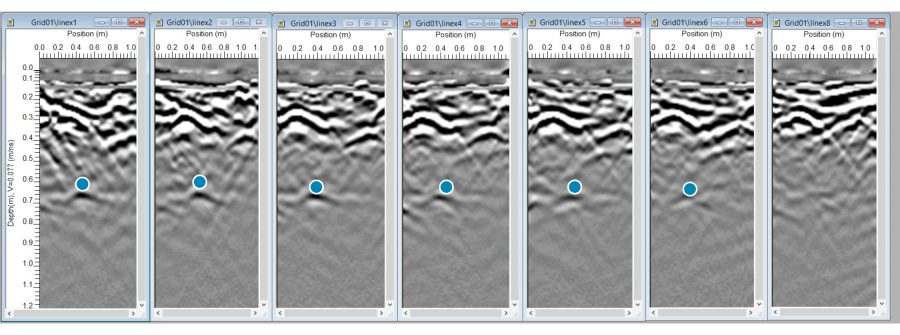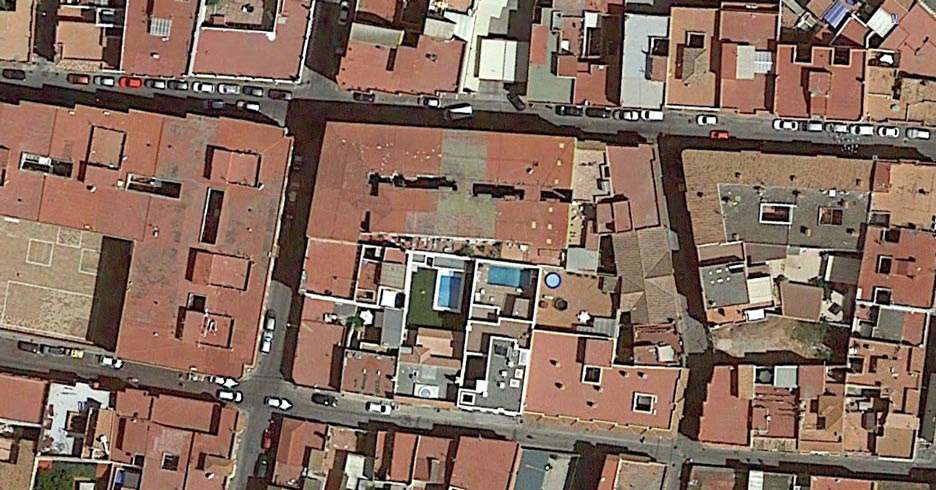very year millions of dollars in water disappears from taxpayer-funded and private water distribution systems around the world. This invisible drain on the economy is a problem that governments and enforcement agencies worldwide have been struggling to deal with for decades.
While some loss to leakage does occur, in some cases fraudsters are paid by unscrupulous home or business owners to tap into water mains and bypass the water meter, resulting in low or no water bills (Figure 1).

Water companies and local governments lose revenue daily to these illegal connections. In addition, these clandestine taps pose a risk to other innocent users of the water network. When the illegal connections are installed into the water mains, they can introduce dirt and other contaminants along with fragments of the foreign pipe material (steel, plastic, etc) into the clean water supply.
Water distributors struggle to detect these illegal connections. The most common indicator of an illegal connection occurs when an occupied residence water usage declines or stops. Depending on how the water metering is monitored, detecting this can take weeks, months, or years. Once discovered, the next step is to determine the nature of the usage drop. If an illegal tap into the water main is used, the tap will usually be underground and not readily visible making locating and disabling a real challenge.
One forward-thinking water company was keen to solve their problem of water theft and they chose to put Sensors & Software’s GPR to the test. In southern Europe a mid-sized home in the suburbs had declining water usage. The water company was suspicious since the home was occupied and they could see from Google Earth images that a large outdoor pool was still operational.
The residence was located within a few feet of the sidewalk; a visual inspection did not show any abnormalities in the connection or disturbance on the ground surface.

A Noggin® 500 SmartCart®, deployed using the fast grid collection capability, allowed the small team to collect a 1.2 x 4-meter grid over the area in front of the house where they suspected the tap might be. A series of hyperbolas were found and marked using the field interpretation capability of the Noggin® system (Figure 2). This series of hyperbolic targets ran parallel and was inferred to be the water main. When the grid data was converted to depth slices with the field interpretations superimposed on top, the truth of the situation became increasingly clear.
The depth slice showed the water company that an unknown linear feature ran from the residence and ended at the company’s water line. This linear feature snakes up from the bottom of the image and appears to connect to the companies water main (Figure 2) suggesting an illegal tap was present. Also, the cross sections from the grid showed hyperbolic responses from the suspected tap line terminating at the water main location (Figure 3). Though the water company could not verify that the two pipes were connected based on the Noggin® data, they had strong evidence that warranted further investigation.

A few weeks later the water company went back to the quiet suburb to discover the truth. Using a small excavator and hand tools, they carefully dug up the area that appeared to have an illegal connection; they were not disappointed. The people who installed the connection had tunneled and tapped into the water line (Figure 4); providing the owner with an unlimited supply of free water.

The successful results of this investigation demonstrate that GPR is a useful tool to help stop water fraud. Once the water company suspects that someone has bypassed the water meter, GPR provides a non-intrusive approach to assess the presence of an illegal tap before bringing in a construction crew to excavate for visible proof.
The Noggin® 500 GPR system provided the information that the water company needed to catch a fraudulent customer and recover lost revenue.








